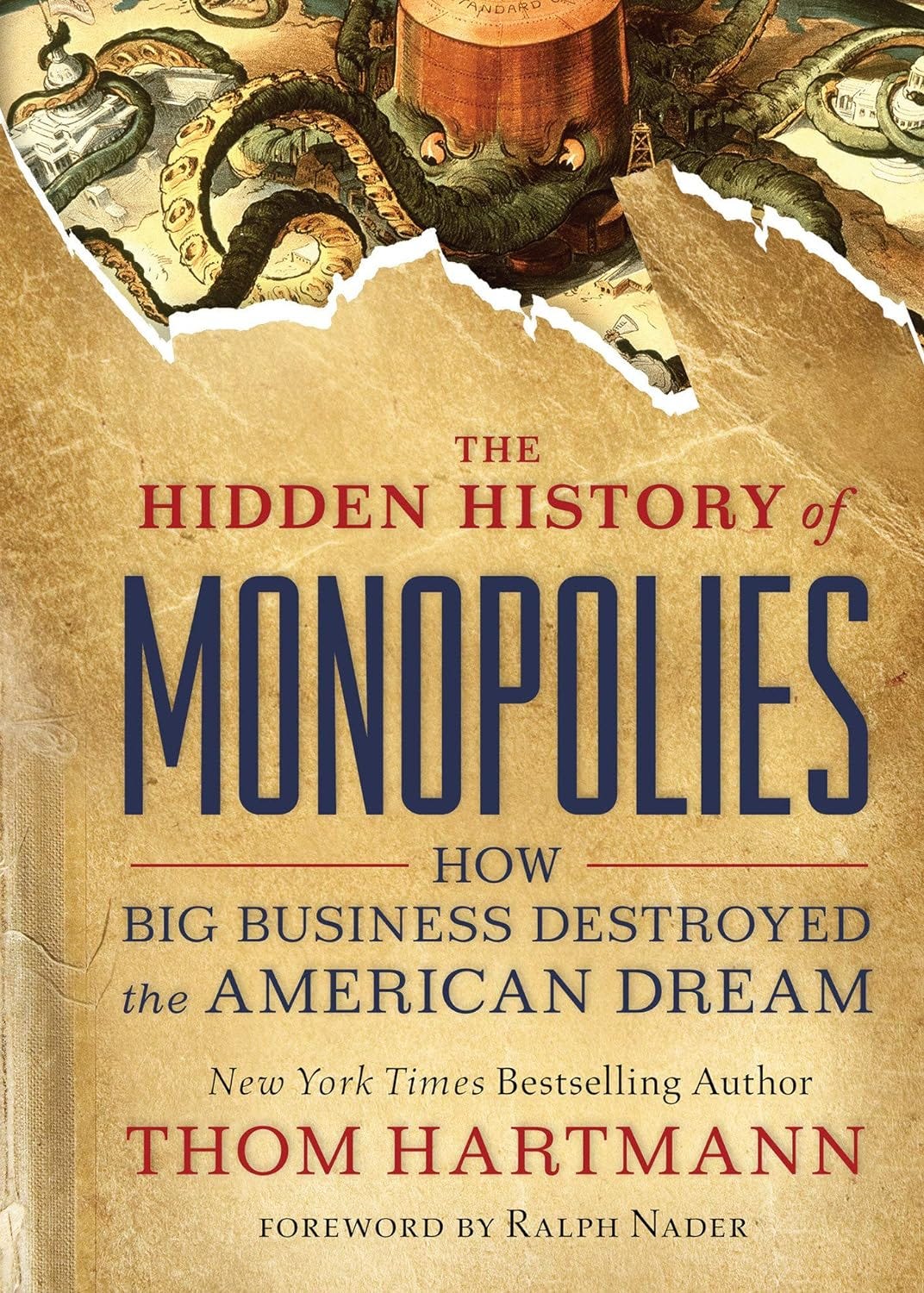Where Did America’s Middle Class Come From?
The Hidden History of Monopolies: How Big Business Destroyed the American Dream

Where Did America’s Middle Class Come From?
We hear a lot about “the good old days,” as if to suggest that America was always an economically strong nation with a vibrant middle class. But the fact is that we got really, really rich—we being the bottom 90% of Americans—in just a few decades after World War II, as a result of Franklin Roosevelt putting into place the economic theories of Adam Smith and John Maynard Keynes, and those policies holding steady until the election of Ronald Reagan.
In 1900, the average yearly household income was $4497— the equivalent of around $13,800 in today’s dollars.8 That kind of income today guarantees a life of want and poverty, and it did in 1900 as well. The only buffer then was the family farm; while today only 1% of Americans live and work on farms, in 1900 it was around 40%.9
My wife’s grandmother, who was born in 1905, lived on a small (100 acres) farm in central Michigan throughout the Republican Great Depression and for a few decades afterward. I remember Grandma telling us stories about how she bought two dresses and a big bag of salt and a big bag of sugar once a year from the Sears catalog; otherwise, everything they needed was locally sourced or grown. They were “poor,” but they weren’t experiencing what today we’d call poverty.
So although there were plenty of multimillionaires in 1900—and, in today’s dollars, a large handful of billionaires as well—about 40% of America was buffered from the ravages of deep poverty by their farms and their neighbors, while half of America was struggling to live in cities and hanging on to the economic and social edge, barely able to make it year to year.
From 1800 until Reagan—except for the hiccup of the Roaring Twenties and its Republican Great Depression— wages pretty much tracked productivity. The core concept of business was that if a workforce can produce more goods in the same time without sacrificing quality, they should share in the increased profits from the increased sales, if for no other reason than Henry Ford’s—so that they’ll stick around and work, and the company doesn’t have to incur the costs of hiring and retraining associated with employee turnover.
In 1913, most auto manufacturers were paying their employees around $2.25 a day, the equivalent of around $14,000 a year in today’s dollars, just slightly below our 2019 federal minimum wage of $7.25. In 1914, Henry Ford famously more than doubled his workers’ pay to $5 a day, or $31,000 a year10 in today’s dollars, in part because of the dramatic increase in per-worker productivity he was getting—and wanted to keep—from his assembly line and in part to keep these now highly productive workers on the job; his main incentive was to reduce employee turnover.11
World War I and the Republican Great Depression introduced serious noise into the employment and wage statistics until FDR came along and righted the ship of state, but with increasing productivity came increasing wages. By 1950, the yearly average worker income in the United States was clipping along at around $3,00012 (household income was $3,300, but most households had a single wage earner),13 or $31,465 per year in today’s dollars.14
As people returning from World War II were finishing trade school and college and entering the workforce, and the stimulative effect of the GI Bill was raising demand for goods and services, that number had grown to $5,700 a year in 1960, or $48,600 a year per household (there were still few multiple- worker households) in 2019 dollars.
Productivity continued to increase, as did wages, hitting a peak in 1970 of $9,430 per year,15 or $61,400 in today’s dollars. Employers were making more and more money and, trying to avoid paying the top marginal tax rate of 91% (up until 1967 and 73% thereafter), they were plowing that money back into their companies and their employees.
Workers had good union jobs, good benefits in addition to that substantial paycheck, home and car ownership, and annual vacations; they could send their kids to college and even own a small summer home. These were all parts of being “middle class” in America.


